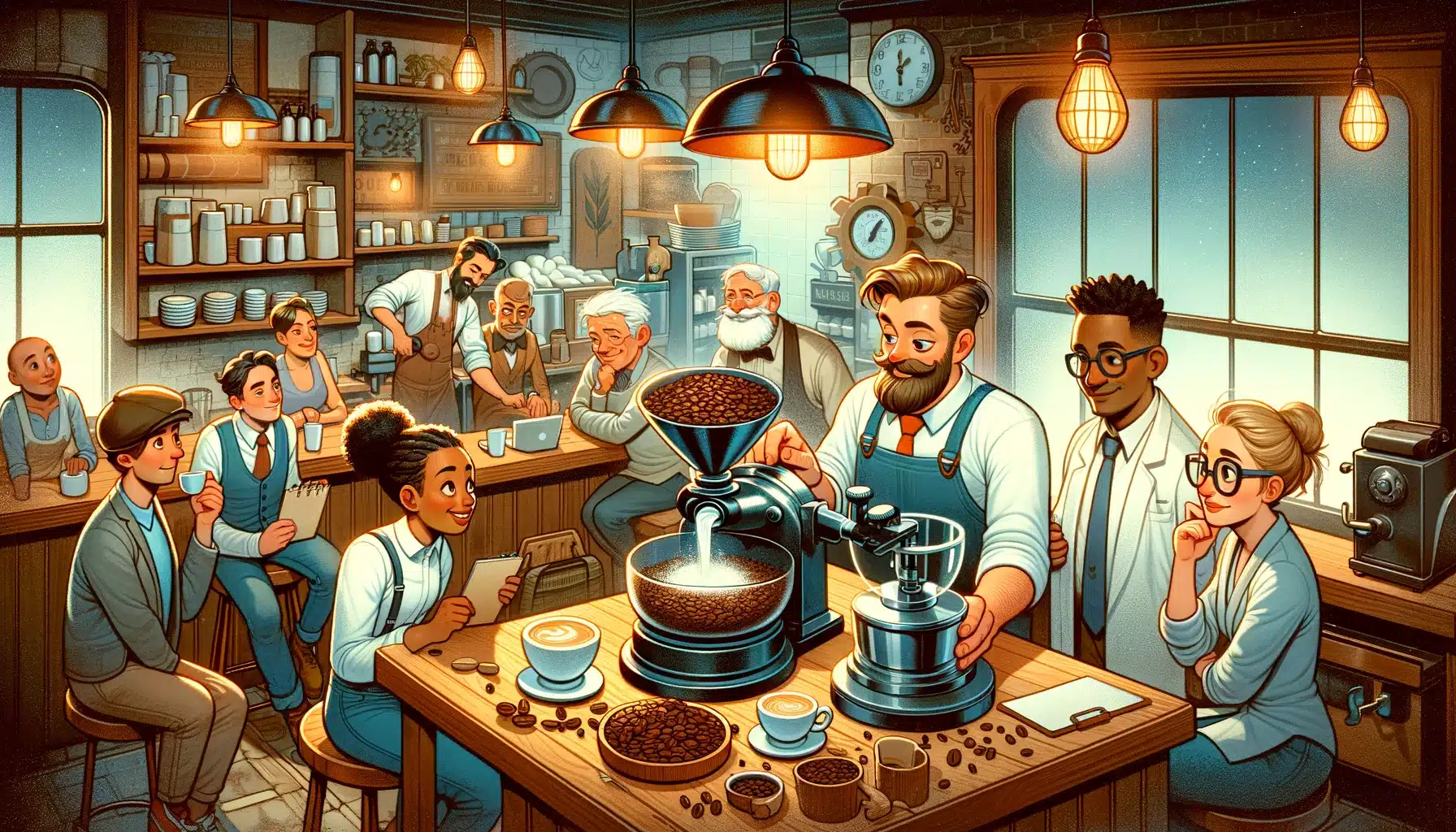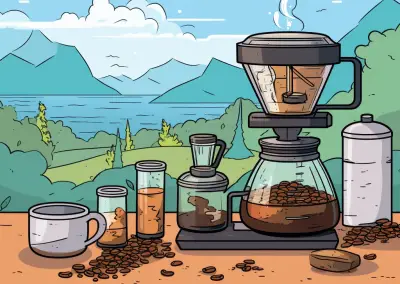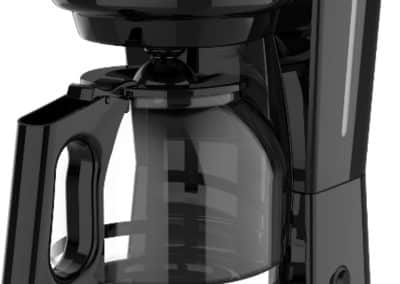Coffee Connoisseurs’ Secret: Water. For many coffee connoisseurs, the art of brewing the perfect cup is an ongoing quest. One long-held belief is that adding a small amount of water to coffee beans before grinding them can make a significant difference in the flavor and quality of the final brew. This seemingly simple technique is thought to bring out the best in coffee beans, ensuring a satisfying cup every time.

Recent research has delved into the science behind this practice, seeking to understand exactly how and why it produces such desirable results. The study conducted by the University of Oregon reveals that adding water to the beans prior to grinding can indeed lead to a better cup of coffee. This finding could have implications not only for home baristas but also for the coffee industry as a whole, as it explores new ways to optimize flavor and enhance the overall coffee experience.
Key Takeaways
- Adding water to coffee beans before grinding can make a difference in the taste and quality of the brewed coffee.
- Recent research from the University of Oregon supports this coffee connoisseur belief.
- This technique could have implications for both home baristas and the wider coffee industry.
The Science of Coffee Grinding

Chemistry and Physics in Brewing
The process of brewing coffee is influenced by a combination of chemistry and physics. A key aspect of the brewing process involves extraction, whereby particles from the coffee grounds combine with hot water to create the final beverage. Researchers at the University of Oregon recently discovered that adding a small amount of water to coffee beans before grinding them could improve the extraction yield and overall quality of the coffee.
The surface area of coffee grounds plays a crucial role in the extraction process. A finer grind results in a larger surface area, allowing for more efficient extraction of particles. However, grinding coffee beans generates heat, which can affect the temperature of the brewing process and alter the coffee’s flavor profile. By adding a small amount of water to the beans before grinding, the temperature is better regulated, leading to a more consistent grinding result.
The Role of Static Electricity
Static electricity is generated during the grinding process due to friction between the coffee beans and the grinder. This electrical buildup causes microscopic clumps and electric charges in the ground coffee particles, leading to clumping and uneven extraction. By adding water to the coffee beans before grinding, it is possible to minimize the static electricity in the ground coffee particles.
Chemists believe that the small amount of water added before grinding helps to reduce the buildup of static electricity by providing a more conductive path for the electric charges. The reduction in clumping allows for a more uniform extraction, ultimately improving the quality of the brewed coffee.
In conclusion, understanding the role of chemistry, physics, and static electricity in the grinding process is essential for achieving a perfect cup of coffee. By simply adding a small amount of water to the beans before grinding, coffee connoisseurs can enhance their brewing experience and enjoy an improved flavor profile in their coffee.
Optimizing Flavor Through Water
The Effects on Taste and Consistency
A little water can make a difference in the flavor and consistency of the coffee. Adding water to coffee beans before grinding them can enhance the release of flavorful compounds during brewing. Moisture interacts with the coffee grounds, extracting flavors that result in a perfect cup of coffee.
The impact on taste contributes to a more consistent and balanced flavor profile. This modification results in smoother flavors, allowing subtle nuances to shine through.
To highlight these differences, consider comparing these two methods:
- Espresso without water added: Potential for uneven extraction and stronger, more concentrated flavors.
- Espresso with water added: Enhanced flavors, smoother taste, and consistency in extraction.
Brewing Techniques and Water’s Influence
There are various brewing methods coffee connoisseurs use to enhance the taste of their favorite beverage. However, no matter the brewing method, it is essential to maintain control over the following variables:
- Coffee to water ratio: Adjusting the coffee to water ratio can help find the balance between strength and flavor.
- Water temperature: The water temperature must be optimal (between 195°F and 205°F) for consistent extraction.
- Brew time: The brewing time greatly influences the coffee’s taste and strength, with shorter brewing giving lighter flavors and longer times leading to bolder, richer flavors.
Integrating water into coffee grounds before grinding can be a subtle alteration that enhances the brewing process. The water addition allows for a more even dispersion of water through the grounds during brewing, resulting in an improved extraction process and better-tasting coffee.
Keep in mind the effects of water quality. High-quality water can make a noticeable difference in the taste, as water with impurities can affect the flavors extracted from the coffee grounds.
Practical Insights for Baristas

Best Practices in Grinder Use
When it comes to creating a consistent brew, baristas must pay close attention to the way they use their professional grinder. The origin of the coffee beans also plays a significant role in the final taste of the coffee. A recent study has shown that adding a small amount of water to the beans before grinding can help improve the brewing process.
Utilizing this technique can lead to a coarser grind, which is often preferable for certain brewing methods. To achieve the best results, baristas should:
- Pre-wet the beans: Moisten the coffee beans lightly prior to grinding, ensuring that they are not overly saturated.
- Invest in a quality grinder: Choose a professional grinder suitable for the selected brewing method and maintain it regularly.
- Experiment with grind settings: Adjust the grinder settings to find the ideal coarseness for the specific beans and brewing method being used.
- Stay consistent: Make slight adjustments to the process accordingly but aim for a consistent approach to achieve a reliable taste.
Reducing Mess in Coffee Preparation
One of the challenges that baristas face is the messy coffee-making process, especially when handling various grinder models. To maintain a clean workspace and reduce mess, consider the following tips:
- Choose a low-static grinder: Look for a grinder model that is known for producing less static electricity, which can help reduce the amount of coffee particles clinging to surfaces.
- Grind the beans in small batches: Divide the beans into smaller portions to prevent an overly-full grinder that may spill grounds onto the counter.
- Use a dosing tool: By utilizing a dosing tool that accurately measures the required amount of coffee grinds, baristas can minimize waste and mess.
- Clean often: Regularly clean the workspace, grinder, and other equipment involved in coffee preparation to maintain a tidy environment.
This practical advice for baristas aims to provide them with useful insights that can enhance their brewing techniques and create an enjoyable experience for coffee connoisseurs.
Technological Advances in Coffee Grinding
From Traditional Methods to Modern Innovations
Over the years, coffee grinding technologies have evolved from simple manual methods to advanced and innovative machines. Traditional grinding methods involved mortar and pestle or manual grinders, which often resulted in inconsistent coarseness and undesirable flavors. Today’s modern coffee grinders utilize cutting-edge technology to produce a consistent and optimized grind.
One key aspect of modern grinding technology is the use of professional coffee roasters. These roasters can demystify the process of achieving the perfect roast and empower coffee enthusiasts to customize their brews. Professional setups enable users to control factors such as the type of roast and the coarseness of the grind. This level of customization helps enhance the overall flavor and aroma of the coffee.
A significant innovation in coffee grinding technology is the introduction of burrs over traditional blades. Burrs offer a more consistent grind size and reduce the likelihood of overheating the coffee beans, which can negatively impact flavor and aroma. Another impactful advancement is the development of adjustable grind settings on electric grinders. This feature allows users to easily switch between different coarseness levels depending on the brewing method being used, ensuring an optimal brewing experience.
The Future of Coffee Grinding Technologies
Looking ahead, the future of coffee grinding technologies offers exciting possibilities:
- Automated grinding systems: The integration of artificial intelligence and machine learning into grinding systems can lead to self-regulating machines that can adapt to different beans, roast levels, and brewing methods. This could provide a seamless and consistently high-quality grinding experience.
- Sustainable and environmentally friendly materials: The development of durable and eco-friendly components can significantly decrease the environmental impact of coffee production. This would benefit both the industry and consumers who prioritize environmental consciousness.
- Advancements in moisture-controlled grinding: Research has found that adding a splash of water to coffee beans before grinding can enhance espresso quality. Future grinding technologies may incorporate systems to integrate moisture control, optimizing coffee bean flavor and aroma.
As coffee grinding technologies continue to advance, enthusiasts and professionals alike can look forward to a future filled with improved grinding consistency, customization, and sustainability. Thereby, enabling them to further explore and experiment with achieving the perfect cup of coffee.
A Global Perspective on Coffee Preparations

Cultural Significance and Diverse Techniques
Coffee has a rich history and cultural significance across the globe. In every country, coffee enthusiasts and connoisseurs have developed different techniques to get the most out of their beans. One crucial element these techniques have in common is the importance of the coffee-to-water ratio and the quality of the brewing water.
Let’s take a look at some well-known techniques:
- Filter Coffee: This method involves pouring hot water over ground coffee held in a paper or metal filter. The water slowly passes through the filter, and a flavorful brew collects in a vessel below. Popularized by Lance Hedrick, this method is known for its ability to extract complex flavors from the beans. Notable devices include the Chemex and the Hario V60.
- French Press (Cafetière): A classic technique involving steeping coarsely ground coffee in hot water for several minutes. The plunger is then pressed down to separate the grounds from the brewed coffee. This produces a robust and full-bodied cup.
- Aeropress: A newer, innovative coffee-making device developed in 2005, the Aeropress uses a plunger to create pressure, and a fine paper filter to separate the brewed coffee from the grounds. This results in a smooth, clean taste with low acidity.
Coffee connoisseurs have long believed that adding a little water to the beans before grinding could make a difference in flavor. Recent research has shown that this technique, called the Ross Droplet Technique, can indeed enhance the taste and aroma of coffee.
The Impact of Bean Origin
The origin of coffee beans has a significant impact on a cup’s flavor profile. The world’s leading coffee-producing regions include:
- Latin America: Known for its bright acidity and balanced flavors. Popular varieties include Colombian and Costa Rican coffee.
- Africa: Ethiopian and Kenyan coffee beans are famous for their fruity and floral notes that create a vibrant and complex cup.
- Asia-Pacific: Indonesian beans, such as Sumatran and Java, often have earthy and bold characteristics, while beans from Papua New Guinea can exhibit a bright acidity akin to Central American varieties.
Recognizing the significance of origin, many coffee shops and connoisseurs focus on specialty beans, opting to source them ethically and sustainably. As climate change poses risks to coffee-growing regions, researchers are also exploring ways to future-proof coffee in a warming world.
In conclusion, the global perspective on coffee preparations showcases the diversity of brewing techniques, the importance of quality brewing water, and the impact of bean origin on the final cup. As coffee culture continues to evolve, these factors are important for both coffee connoisseurs and casual drinkers alike.









